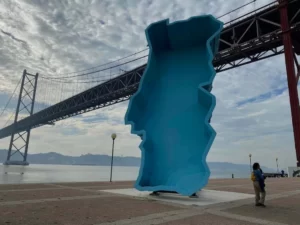When strolling through the Belém District, one cannot help but ponder whether it is truly worth venturing inside the Jerónimos Monastery.
The Jeronimos Monastery was the most visited monument in Lisbon during the year 2022, and the number one spot was held long before the Covid Pandemic. There are no stats for the current year, but judging by the long lines waiting to enter the church and the Cloisters, it seems the number one spot still belongs to this monument.
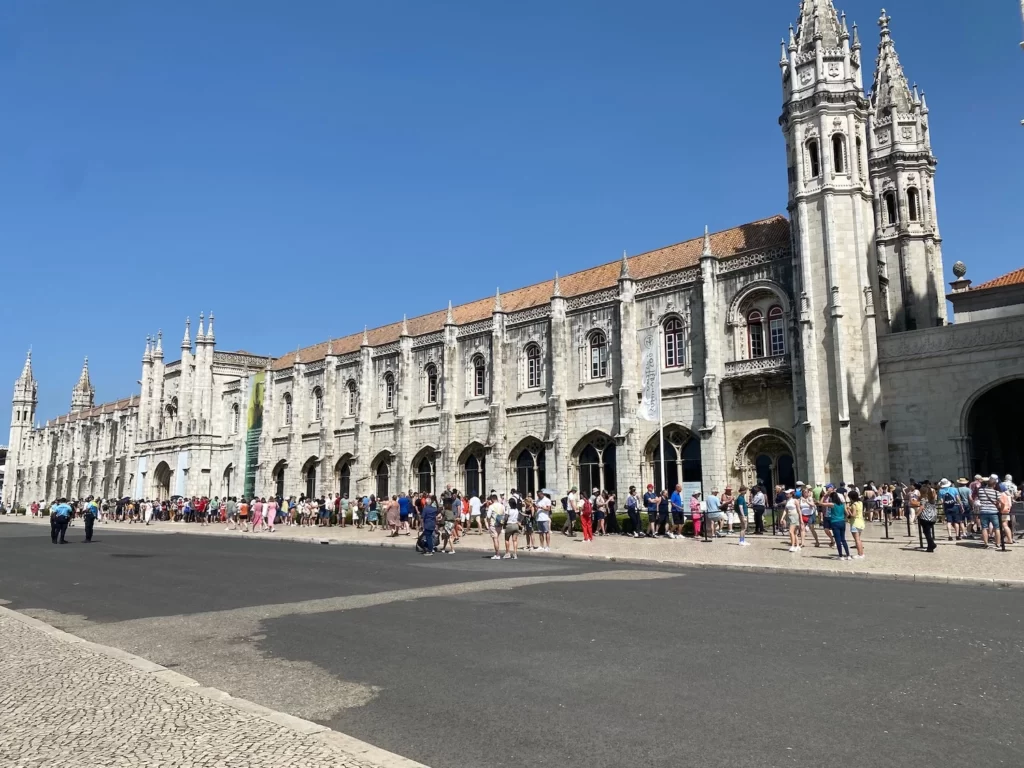
Is it worth going inside the Jerónimos Monastery?
The Monastery is pretty much part of a typical half-day visit, it’s on every must-see and things-to-do list in Lisbon. So, writing an article describing what makes this monument worth visiting doesn’t seem to make much sense, no need for extra advertisement given the long lines. But it’s impossible for me not to answer yes to the question: Yes, it’s worth going inside the Jerónimos Monastery.
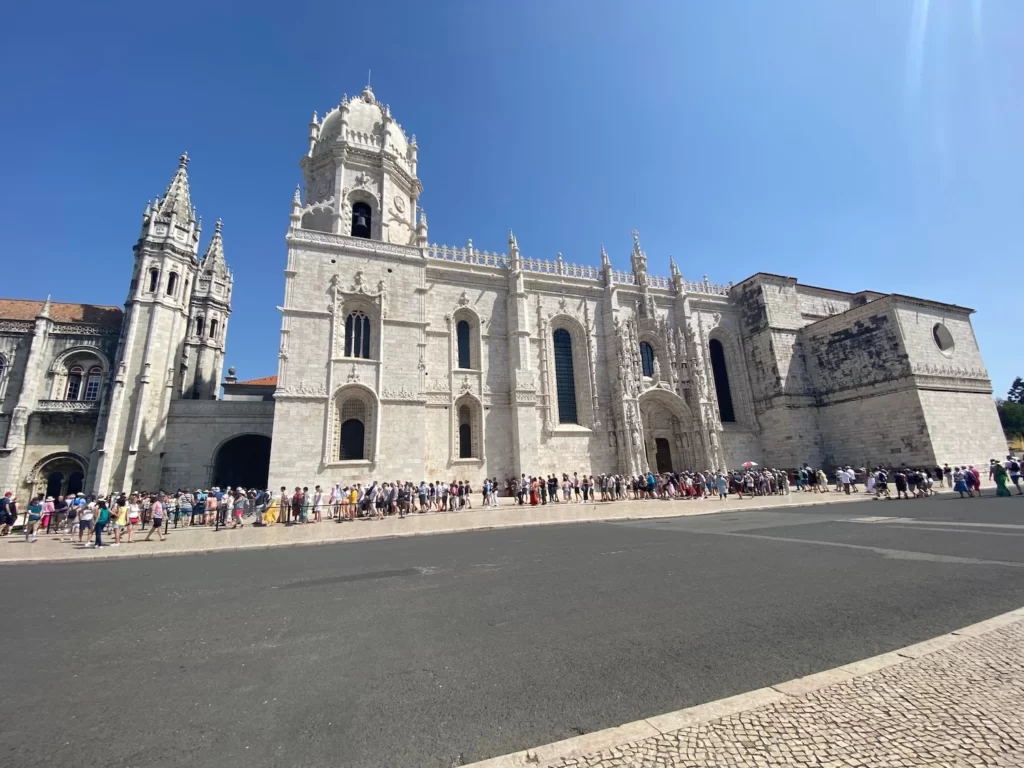
But there’s a caveat. You might think that the Monastery is that long building in the first picture, but in reality, that long building holds two different museums: the Maritime Museum and the Archeological Museum. They occupy the restored building of the monastery, built in the 1800s. When we write about the Jerónimos Monastery we are referring to the Church and the Cloister, the only part that remains from the original 16th century building.
- Is it worth staying in line to visit the Church? Yes.
- Is it worth staying in line to visit the Cloister? It depends. The Cloister is usually referred to as one of the most beautiful cloisters in the world, it’s a covered arcade running along the walls of the building and around an open courtyard. It houses the restored refectory and Chapter house. It has wonderful carvings and details as decoration. If you love architecture and gothic art, yes, it is worth it. If you are expecting to see what a monastery was like in the past, maybe not.
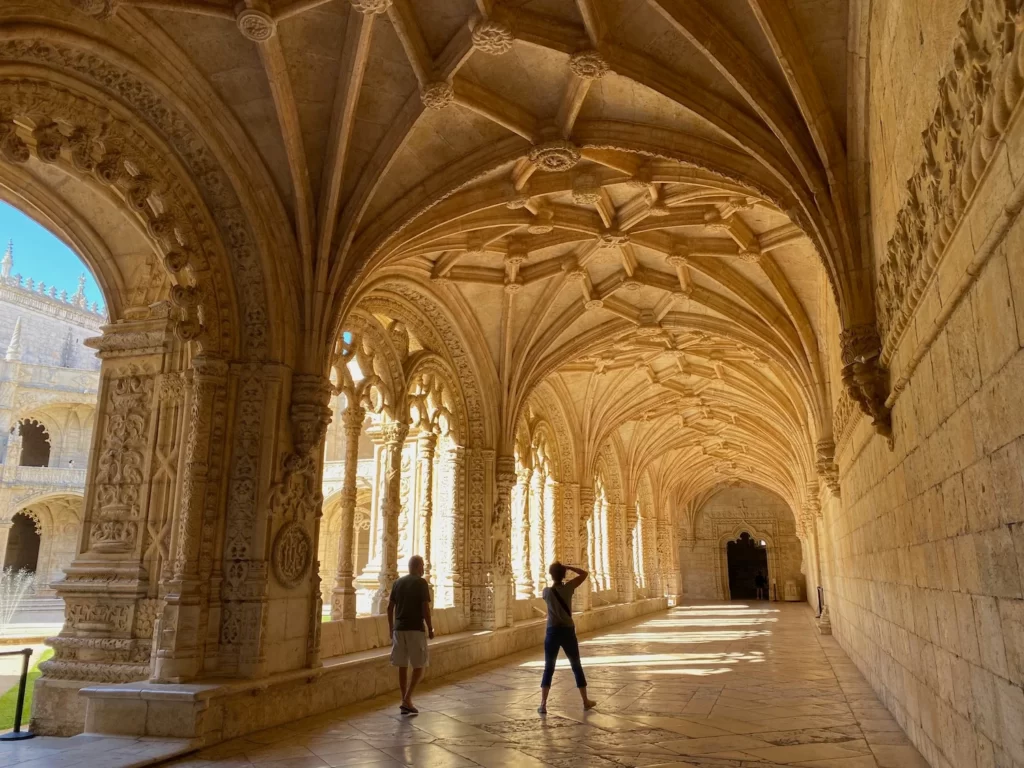
Visiting Jerónimos Monastery.
The Jerónimos Monastery comprises the church and the cloister, each with its distinct entrance and a distinct line.
Church: 10h30 – 6 pm
Free entrance. The church maintains religious services, for these reasons, during religious ceremonies tourist visits are not possible. On weekends (Saturdays and Sundays) entry is limited during the mornings. Ideally, plan your visit for the afternoon at these times.
The queue to enter the church can be long, but generally, it flows faster.
Cloister: 9:30 am – 6 pm
Paid admission: 10€/person. The ticket can be bought inside the Archaeological Museum or at the kiosk next to the tourist bus parking lot. Online purchase is recommended.
Free for Lisboa card holders.
The wait to enter the cloister tends to be long. The line is for ticket holders only.
Both Church and Cloister are closed on Mondays.
Why the Church of the Jerónimos Monastery is worth a visit
As mentioned, the Jerónimos is part of a normal tour of Lisbon. I lost count of how many times I visited the church. Probably I’ve been to the church every other week for the past 25 years. It’s almost like my office.
But there are moments when entering the Jerónimos church is like the very first time. Whether it is because it is a time of day where the sunlight comes in diffusely, or a lucky moment to find the church empty. Or all this and having a group behind me visibly impressed and make me see it through their eyes.
An image describes it better than all the words:
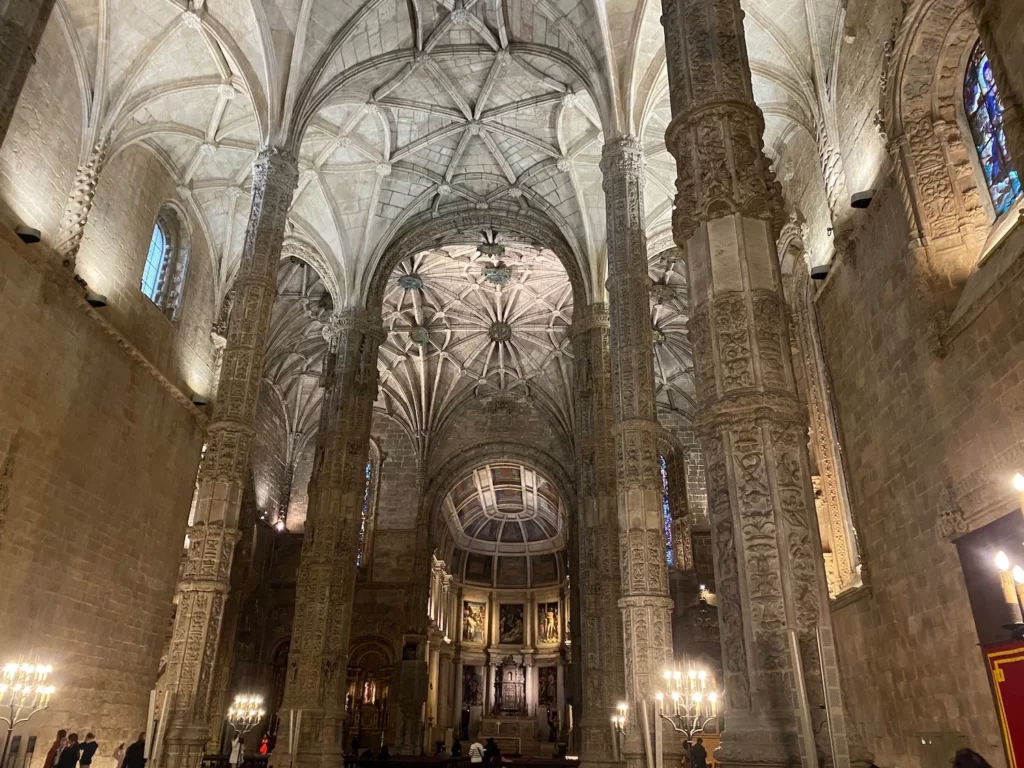
The History
The Jerónimos Monastery was built by order of King D. Manuel I. Although the plan dates back to 1495, construction only began on Kings’ Day, January 6, 1502. Contrary to what is claimed, the construction of the monastery was not intended to commemorate the success of Vasco da Gama’s voyage. But Gama’s return and the discovery of the sea route to India had a serious impact on the plans for the monastery.
During his lifetime, King Manuel made successive donations to the monastery, and from 1517 the church becomes the royal pantheon. Here we find the tombs of the Avis-Beja dynasty.
The construction had several phases and although the plan reached the 4 cloisters, the several dormitories, by the end of the 17th century, only one dormitory and one cloister were completed.
The earthquake of 1755 caused damage but it was not destroyed. After the separation of Church and State in 1834, the monks left the monastery. The remodeling of the monastery to house a boarding school caused several damages to the building. The restoration of the building, now housing the museums, was finished in the early years of the 20th century.
The Manueline Style
One of the defining features of the Jerónimos Monastery is its remarkable architecture. This decorative style, known as Manueline, blends elements of late Gothic, Renaissance, and Moorish influences, creating a visually stunning and intricate interior.
Falsely connected to Portugal’s maritime heritage, this decorative style was named after King Manuel I during the 19th century.
Throughout Europe, during the affirmation and birth of nations, there was a desire to find a “national” style that could synthesize the volkgeist of a country. For the Portuguese, this was the golden age of Discoveries, especially the time of King Manuel I. Under this ideal, 19th-century men saw a unique Portuguese style, filled with sea-themed motifs, including ropes, knots, and maritime symbols.
In reality, the decorative elements we find in the church and cloister are variations of the same late gothic elements we can find in the rest of Europe and most of the sea-themed motifs (ropes, fish, ships) are the result of the restoration campaigns of the late 1800s.

There is so much more to tell you about the history and details of this world heritage monument. To learn more, book our tour of Belém District which includes a visit to the church.

